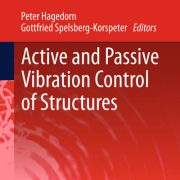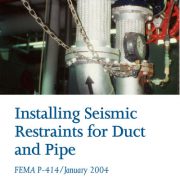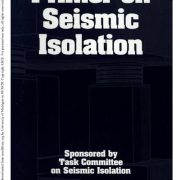BUILDING CONTROLWITH PASSIVEDAMPERSOptimal
Performance-basedDesign for Earthquakes
The concept of performance-based design is well accepted in the current struc-tural design practice of buildings. In earthquake-prone countries, the philosophyof earthquake-resistant design to resist ground shaking with sufficient stiffness andstrength of the building itself has also been accepted as a relevant structural designconcept for many years. On the other hand, a new strategy based on the conceptof active and passive structural control has been introduced rather recently in orderto provide structural designers with powerful tools for performance-based design(Kobori, 1993; Housneret al., 1994, 1997; Soong and Dargush, 1997; Koboriet al., 1998; Hanson and Soong, 2001; Casciati, 2002; Johnson and Smyth, 2006).Passive control systems are often used to meet flexibly the requirements posed.
bythis performance-based design
However, the structural engineers do not appearto have the tools for the optimal selection and placement of these passive controlsystems.Although the use of structural control devices may reduce the overall earthquakeresponse, it is often the case that some local structural responses are amplified; forexample, member forces around the control devices. These phenomena should beresolved in the actual structural design. In addition, it should be kept in mind that earth-quake ground motions have a lot of uncertainties; for example, see Drenick (1970),Anderson and Bertero (1987), and Takewaki (2006). In order to tackle this difficultproblem, smart installation of passive control devices or passive energy dissipationsystems is expected to play a vital role.In this book, optimality criteria-based and optimal sensitivity-based design algo-rithms are explained in detail for passive control and energy dissipation systemsin building structures. Displacement, acceleration, and earthquake input energy areregarded as three major target indices for performance-based design. It is shown that,once the building frames and passive control and energy dissipation systems are mod-eled appropriately, the optimal quantity and placement of passive control and energydissipation systems are determined automatically and simultaneously.
The structural systems treated
here are fixed-base shear buildings, fixed-basemoment-resisting frames, fixed-base three-dimensional buildings, shear build-ings with and without tuned mass dampers on surface ground, and bending-shear build-ings on surface ground. Since it is well known that the ground or soil under buildingsinfluences the seismic behavior of buildings with and without supplemental dampers,the model including the soil–structure interaction effect has been desired. Both thetransfer functions and earthquake responses are introduced as the performance indices.
| عنوان |
BUILDING CONTROLWITH PASSIVEDAMPERSOptimal Performance-basedDesign for Earthquakes |
| نویسنده | Izuru Takewaki |
| زبان | English |
| Size | 557 MB |
| Download Method | مستقیم |
| Download Links | Download BUILDING CONTROLWITH PASSIVEDAMPERSOptimal |






 تهران، شهرک غرب، بلوار خوردین، بلوار شریفی، توحید 4، پلاک 6، واحد 111
تهران، شهرک غرب، بلوار خوردین، بلوار شریفی، توحید 4، پلاک 6، واحد 111

